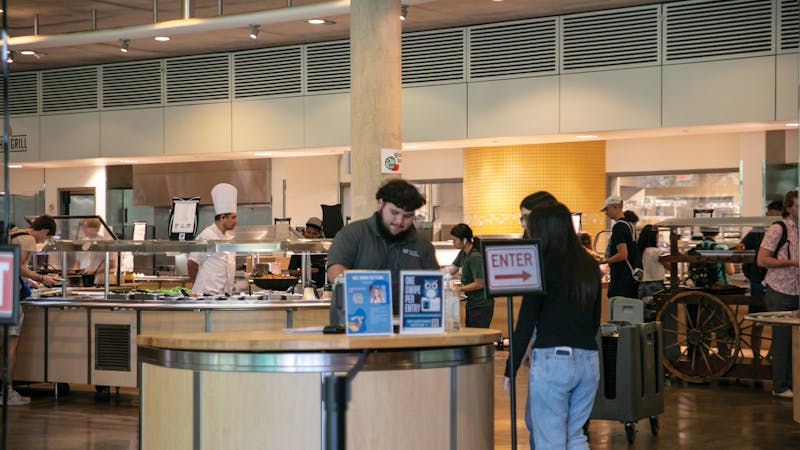Rising number of student clubs prompts scrutiny from administration, SA

Student Activities plans to address the increasing number of student clubs according to Olivia Barker, Associate Director of Student Activities. This semester, there are 49 new student clubs and 239 reregistering clubs, while 42 clubs from last year did not complete their renewal or registration process.
“I want to see where we are at comparing to our peer aspirational colleges,” Barker said. “Rice’s ratio of students to clubs is lower than that of peer institutions.” Barker said the overabundance of student clubs undermines their function of bringing together students with similar interest. “Where that hurts us is that [student clubs] are fighting for members,” Barker said. “Some of our clubs only have two to three people, which is fine, but they could have other members [who join similar clubs instead].”
Current student clubs can be divided into nine genres: academic or honorary, cultural, political, recreational or sport, religious or spiritual, service, social and special interest. According to Barker, student clubs’ missions can sometimes overlap.
“[For example], we have 20 mentoring clubs on campus,” Barker said. “They all serve mentoring purpose but everybody has their club started because they have a niche group they want to work with. But you can have one mentoring club and have one committee on that group that is specific to the niche area.”
Barker said although annually 20 to 30 student clubs do not apply to reregister, the total number of clubs is increasing because 40 to 50 new clubs are created each year. “In total last year, we had 40 or 50 new clubs started,” Barker said. “Close to half of the new clubs didn’t come back this year. A lot of our students want to start a club because you want to have that on your resume. Our goal is that we also want this club to be sustainable after you leave.” According to Barker, another prominent issue is students taking multiple leadership positions in different clubs. Currently, 553 individual students serve leadership positions as president, vice president and treasurer at around 300 student clubs. Barker said she thinks this overlapping among student leadership roles presents a huge challenge to the student body.
“One, you are not giving your all to every single club because you don’t have that capacity,” Barker said. “Second is it takes away the opportunity from someone else to be part of a club, find their connection point and really develop themselves as a leader. Lastly, from a well-being perspective, you all are already spread so thin. Could you be a leader of three different clubs and do it really well?”
Currently, starting a new club requires a club to have a president, a vice president and a treasurer, as well as a faculty or staff sponsor. Barker said Student Activities will determine whether it is necessary to set a lower bound on the number of members in order to start a new club. “That’s a pretty easy way to start a club,” Barker said. “Philosophically I believe [student clubs] can have leadership but [student clubs] need to have followership too.”
Club renewals begin in April, Barker said. New club registration is only available in the fall semester. A new club must undergo training in risk management and club development. The leaders also meet with Barker. “At the new club meeting, you would need to fill out a club registration form, a sponsor form and a president’s form,” Barker said. “Your sponsor has to be risk-management trained.”
Once a new club has completed the above process, the Student Association and Graduate Student Association then review constitutions to ensure certain policies and procedures are included in the constitution, according to Chair of the SA’s Committee for Club Approvals Annabelle McIntire-Gavlick. The constitution is then passed to the Committee for Club Approvals.
She said the committee examines whether there is any overlapping of the proposed club with current clubs on campus. “This is primarily based on their mission and purpose,” McIntire-Gavlick said. “[We want to see if] they are providing anything different.” Bethany Fowler, president of Rice Oceans Club, said club success is typically measured by the number of students at events, but small clubs can play important roles on campus.
“A club can be just as successful catering to a smaller niche, so long as the students who are involved are taking it seriously,” Fowler, a Jones College junior, said.
McIntire-Gavlick said the SA is considering creating a task force to investigate this issue.
According to SA Secretary Brianna Singh, the SA may designate different committees to approve different club types. The current Clubs Approval Committee has four members. “We want to see if it’s going to be better if there are more people running the whole process,” Singh, a Hanszen College sophomore, said. “For example, an academics clubs approval committee only looking at academic clubs.
More from The Rice Thresher

Dis-O, move-in weekend see increase in alcohol transports from last year
Rice’s first wet weekend of the year saw four times as many calls for intoxication-related transports of students to the hospital compared to the previous three years, according to emails sent out by college presidents and chief justices.

On-campus meal plan changed to unlimited swipes
Housing and Dining recently revealed a new dining plan for the upcoming semester. The required on-campus meal plan now has unlimited meal swipes, compared to 375 meal swipes last year. H&D said the previous on-campus meal plan was for students who intended to eat on campus 15 to 25 meals a week.

Rice Stadium student section relocated
The Rice Stadium student section has been relocated to sections 106 and 107, according to an announcement from Rice Athletics on X.

Please note All comments are eligible for publication by The Rice Thresher.